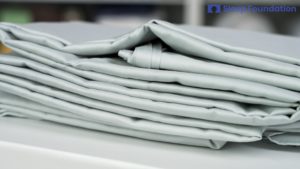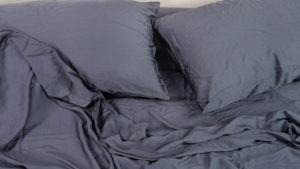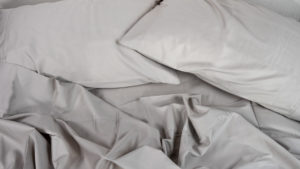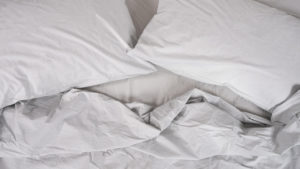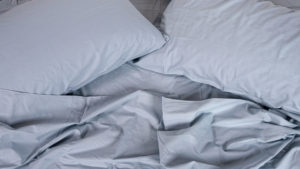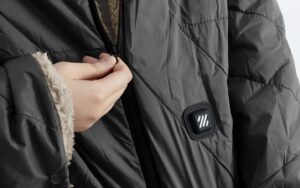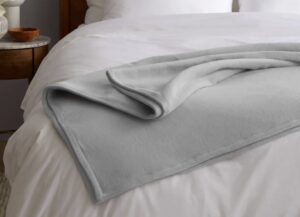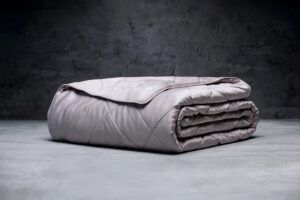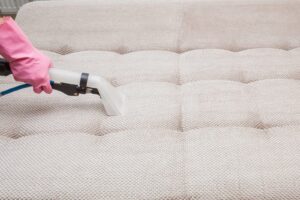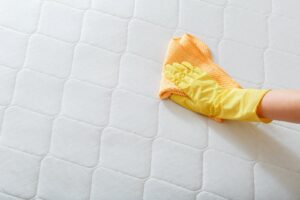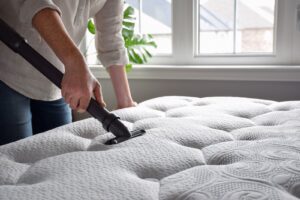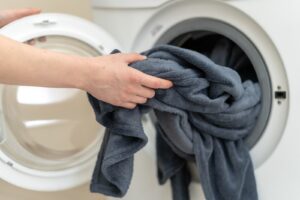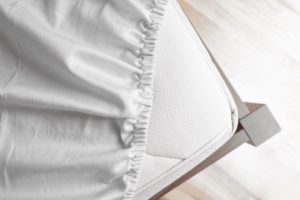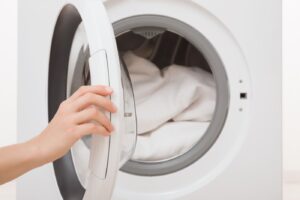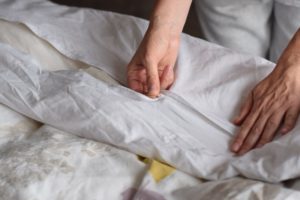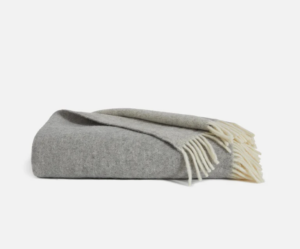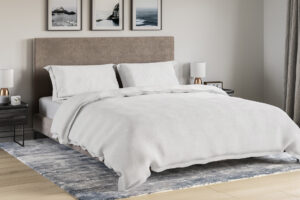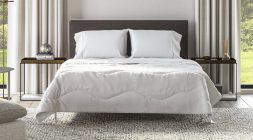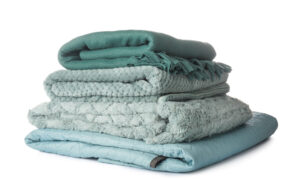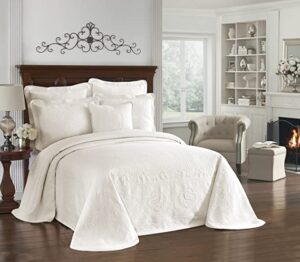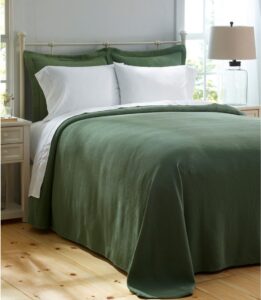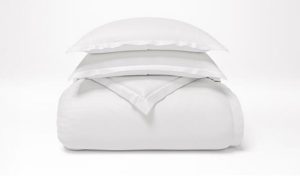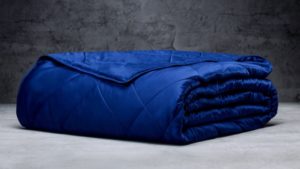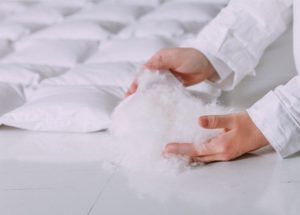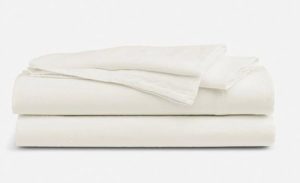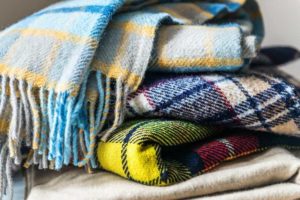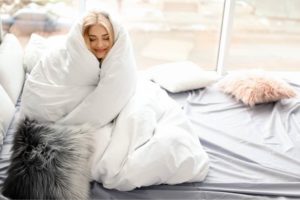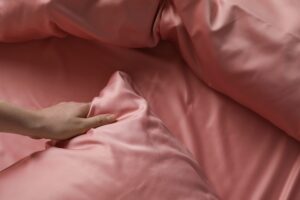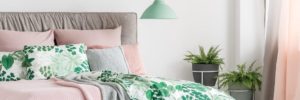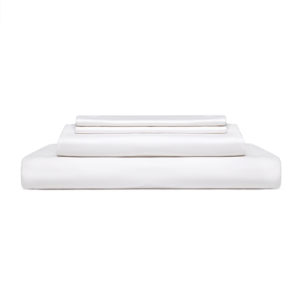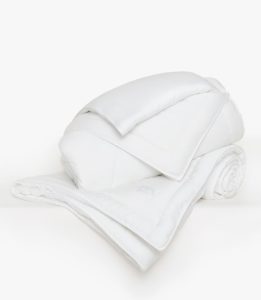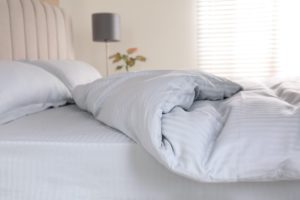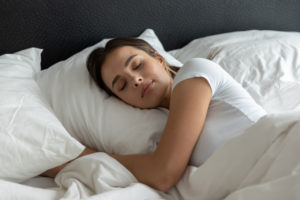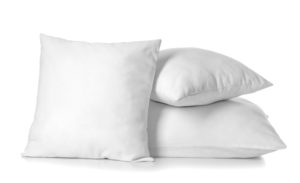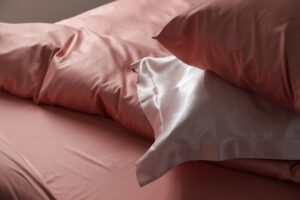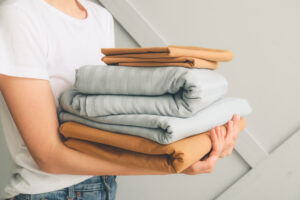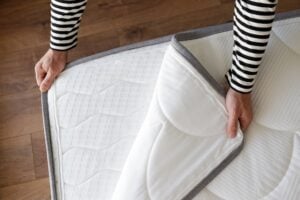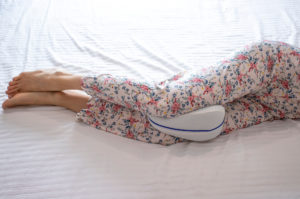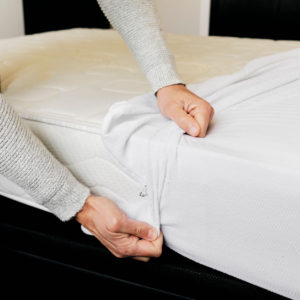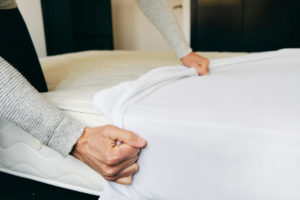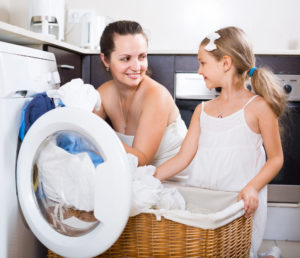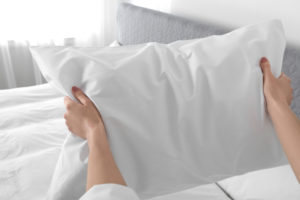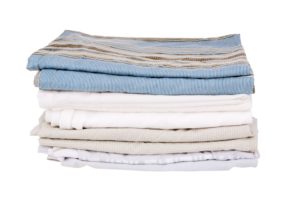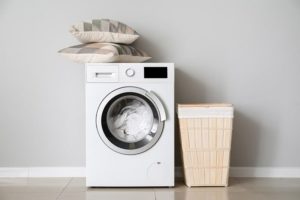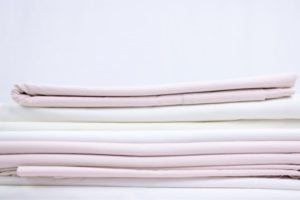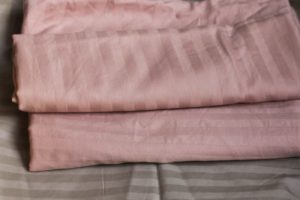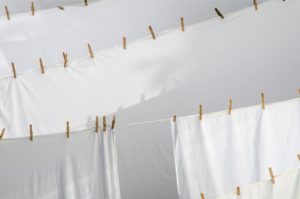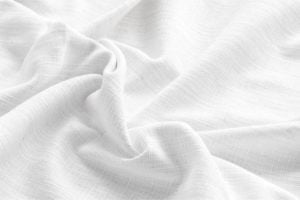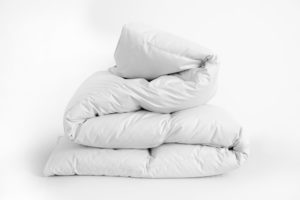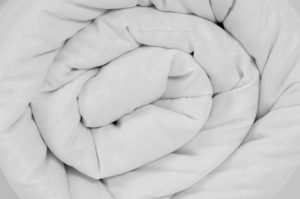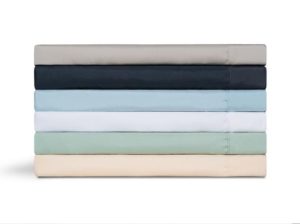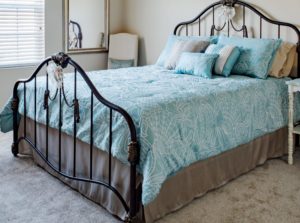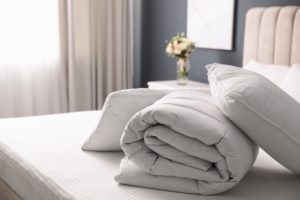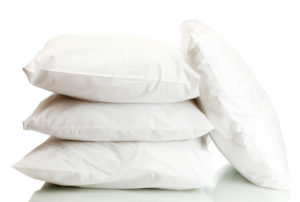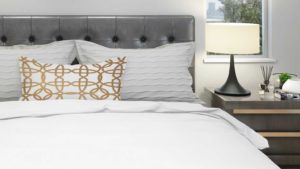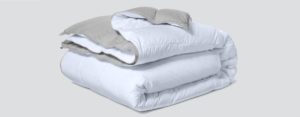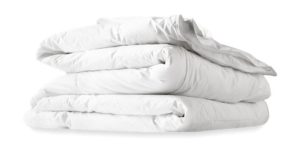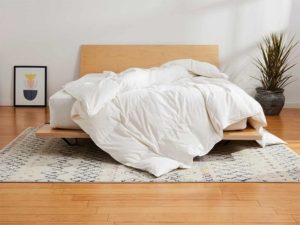Sateen vs Percale Sheets
Sheets can enhance your sleep experience, but they could also detract from it. Many shoppers may not get the best sheets for them because they neglect to weigh their options carefully. There are many different types or categories of sheets, and these can be just as important as the actual product itself.
We’ll compare and contrast two of the most popular types of sheets: sateen and percale. Sateen and percale technically refer to the weave, so even within each category, there’s a good deal of variation between sheet sets. However, we’ll examine their general construction, performance, and potential pros and cons to help you decide if one of these options may be ideal for you.
Sateen Sheets
Sateen fabric uses a one yarn under, three or four yarns over weave that gives them their distinctive look and feel. The appearance tends to have a subtle shine, and the fabric drapes exceptionally well. Sateen sheets are naturally wrinkle-resistant, so they have a smooth look without ironing.
This weave makes the resulting sheets a bit heavier than percale, which can make them seem cozy and luxurious. However, they may also be more likely to trap heat. Sleepers who tend to get cold during the night may appreciate this extra warmth, but it might not be ideal for hot sleepers. The fabric starts out very soft and smooth, but pills or snags could emerge as the sheets age.
Cotton, polyester, rayon, and lyocell can be used in sateen sheets, each influencing the performance. When silk and nylon are used with a similar weave, the resulting fabric is considered satin.
Sateen sheets vary in their materials and quality, and their prices also reflect this. Both budget-friendly and premium options are available.
Pros & Cons
| Pros | Cons |
| Resistant to wrinkles | Sheen could fade |
| Silky-smooth texture | Snags or pilling may develop |
| Slight sheen | May retain heat |
| Drapes well | Could bunch due to slippery finish |
Percale Sheets
Percale sheets use a one-over-one-under weave that gives them their classic crisp, smooth feel. Most percale sheets have a thread count of at least 200, so the weave is fairly tight. However, percale is still highly breathable. In fact, it is often considered the best type of sheet for people who tend to sleep hot.
While varieties of sheets are often defined by their materials, percale is a weave and not a material itself. This means that several materials could be used in the construction of percale sheets, including cotton, polyester, rayon, and/or lyocell. Each has its own performance implications.Percale sheets usually start out soft and get even softer with repeated washings. They have a smooth matte finish that some compare to an ironed button-down shirt. The best percale sheets also tend to be durable and easy to care for. However, since they’re prone to wrinkling in the wash, many sleepers choose to iron percale to enhance its crispness.
Pros & Cons
| Pros | Cons |
| Durable | May wrinkle |
| Breathable | Not as soft |
| Softens over time | |
| Easy to care for | |
| Crisp, smooth feel |
Sateen vs. Percale Sheets
Sateen and percale sheets are both popular, but for very different reasons. Customers often like sateen sheets for their silky texture, excellent draping, resistance to wrinkles, and stylish sheen. However, many prefer percale sheets for their crispness, breathability, and durability.
Both sateen and percale are weaves rather than materials. This means that options in either category could use different materials that affect their feel, performance, and durability. While these weaves have some common traits that should be relatively consistent between products, the materials will also play a big role.
Since sateen and percale each come in a wide range of materials and quality levels, they also both vary in price-point. Budget-friendly and luxury options are available for both types of sheets. Across the board, the price tags are similar between sateen and percale.
| Category | Sateen | Percale |
| Durability | Sateen sheets tend to be moderately durable. However, pilling and snagging may limit their usable lifespan, and the sheen may fade over time. | Washing softens percale sheets, so they may get more comfortable over time. This lends to their exceptional durability. |
| Comfort & Feel | Their silky texture makes sateen sheets popular with sleepers with skin sensitivity. | Percale sheets usually have a light, crisp, smooth feel comparable to a pressed button-up shirt. |
| Cost | Sateen sheets come in different materials and varying degrees of quality, and their cost reflects this. Prices start at under $50 and reach upwards of $500. | Prices for percale sheets vary based on their quality and materials. Like sateen sheets, they start at less than $50 and reach over $500. |
| Temperature Neutrality | Sateen sheets are more prone to heat retention than some alternatives. In winter, this may feel cozy to sleepers. Most individuals choose to use sateen sheets year-round, but especially hot sleepers may find them too warm. | Since they regulate temperatures well, percale sheets are good for all seasons. They’re breathable enough to satisfy hot sleepers, but they can also help keep you warm on a cold night. |
| Cleaning & Care | Most sateen sheets are machine washable on the gentle cycle with a mild detergent. Many can also be dried in a machine using the no-heat, air-dry cycle. | Percale sheets can typically be machine washed and dried. However, they’re prone to wrinkling, so owners may prefer to iron them for maximum crispness. |
Our Verdict
Sateen and percale sheets have potential benefits that may appeal to some sleepers and potential drawbacks that may be a turnoff for others. Percale is light, crisp, and durable, whereas sateen is silky, heavier, and wrinkle-resistant. Percale’s main downsides may be its propensity to wrinkle and make noise when the sleeper moves, while sateen’s main weaknesses could be its added warmth and tendency towards pilling.
Both are popular for a reason, and either one could promote an exceptionally comfortable night’s sleep depending on your personal preferences and sleep style.
You may prefer sateen sheets if:
- You like sheets with a sheen
- You tend to get cold during the night
- You dislike ironing but want a smooth look
You may prefer percale sheets if:
- You tend to sleep hot
- You prefer durable sheets that get softer over time
- You plan to use the same sheet set through all seasons

Still have questions? Ask our community!
Join our Sleep Care Community — a trusted hub of sleep health professionals, product specialists, and people just like you. Whether you need expert sleep advice for your insomnia or you’re searching for the perfect mattress, we’ve got you covered. Get personalized guidance from the experts who know sleep best.

